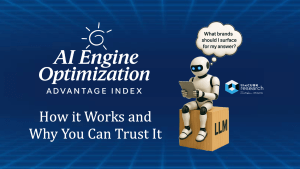At FinOps X 2025, the world’s largest cloud cost optimization event, leading hyperscalers—Amazon Web Services (AWS), Google Cloud, Microsoft Azure, and Oracle Cloud Infrastructure (OCI)—aligned around a shared vision: unify cloud financial operations through AI and the FinOps Open Cost and Usage Specification (FOCUS™). As cloud complexity continues to surge, theCUBE Research estimates the global IT services market will grow from $1.5 trillion in 2024 to $2.6 trillion by 2030, driven by multicloud adoption, platform consolidation, and automation.
This scale underscores the urgency for more innovative FinOps practices. Cloud providers are answering the call by embedding AI into native tooling and adopting open standards to simplify financial accountability in a multicloud world.
Amazon Web Services: Automating Cost Optimization at Scale
AWS introduced a slate of AI-powered tools to turn cost signals into savings actions. The AWS Cost Optimization Hub, now integrated with Amazon Q Developer, uses generative AI to analyze billions of usage patterns and surface expert-validated savings plans. This builds on theCUBE Research’s observation that AI-driven FinOps tooling is shifting from reactive reporting to proactive recommendation engines.
Further supporting this shift, AWS Compute Optimizer now supports Aurora I/O Optimized Recommendations, offering cross-dimensional insights into compute, storage, and I/O patterns for Aurora clusters. The AWS Pricing Calculator has been updated to support org-specific rates, providing granular budgeting capabilities for FinOps teams.
In tandem, the release of CUDOS Dashboard v5.6 adds a Taxonomy Explorer—a long-requested feature by enterprises—to analyze cost trends across complex organizational hierarchies. This enhancement helps address what theCUBE Research identifies as a top challenge in FinOps maturity: translating data into accountability across business units.
“AWS’s strategy is clear: reduce time to insight and time to action. That’s the currency of next-gen FinOps.”
Google Cloud: Embracing Open Standards for Transparency
Google Cloud continued emphasizing transparency and cost observability by reinforcing support for the FOCUS standard. While the company did not announce new tools at the event, its partnership with the FinOps Foundation signals a strong endorsement of interoperable, open billing schemas.
As multicloud adoption accelerates—over 76% of enterprises now use multiple cloud providers, according to theCUBE Research—Google’s approach resonates with FinOps leaders looking to unify reporting and reduce the overhead of cloud-native tool fragmentation.
“Google is betting that openness and consistency across platforms will become a competitive advantage in multicloud FinOps.”
Microsoft Azure: Expanding the FinOps Horizon Across SaaS and PaaS
Microsoft took a broader stance at FinOps X 2025, expanding FinOps principles beyond core infrastructure. The release of FOCUS 1.2, which now supports SaaS and PaaS billing formats, signals Microsoft’s intent to help organizations track total technology spend, not just cloud infrastructure.
This aligns with theCUBE Research’s latest findings that 30–40% of enterprise cloud spend is now tied to managed services and platforms, which are often excluded from traditional FinOps dashboards. Microsoft’s ability to bring these into scope with FOCUS 1.2 enables CIOs and CFOs to align digital investment with business outcomes.
“The reality is most organizations aren’t just managing EC2s and VMs anymore—they’re managing Salesforce, ServiceNow, and hundreds of APIs. Microsoft’s FOCUS 1.2 support shows FinOps is maturing into holistic tech ops.”
Oracle Cloud: Targeted Governance for Enterprise Cost Control
Oracle showcased its FinOps, cost management, and governance suite, tailored to meet the needs of enterprises running mission-critical workloads. The OCI FinOps Hub centralizes spend tracking, forecasting, and resource rightsizing. Oracle’s strategy centers around accountability and operational control, particularly in regulated and high-performance environments.
With expanded FOCUS support, OCI aims to offer normalized data across multicloud landscapes—key for customers pursuing hybrid and cross-cloud architectures. theCUBE Research notes that hybrid cloud remains a dominant deployment pattern, especially in industries like financial services and healthcare, where cost control and compliance go hand in hand.
“Oracle is doubling down on governed cloud efficiency—a differentiator in verticals that demand cost visibility and operational rigor.”
What It All Means with The Rise of Federated FinOps
The key takeaway from FinOps X 2025 is the convergence of open standards and intelligent automation. FOCUS has emerged as the lingua franca of cloud cost data, while AI is helping organizations shift from dashboards to decision-making.
According to theCUBE Research’s recent FinOps survey of 500 IT leaders:
- 82% cite cost allocation across departments as a major challenge.
- 68% say manual processes are the top barrier to FinOps maturity.
- 72% plan to consolidate financial tooling across clouds within the next 18 months.
The combined push by AWS, Microsoft, Google Cloud, and Oracle to standardize and automate cost management signals that FinOps is evolving from a niche practice to a boardroom imperative.
“FinOps X 2025 marks a watershed moment: the industrialization of cloud financial operations. As AI, FOCUS, and multicloud strategies converge, FinOps isn’t just about saving money—it’s about running the business of IT more intelligently.”



